Don’t Freeze! Here’s How to Take Cooler Cold-Weather Photos
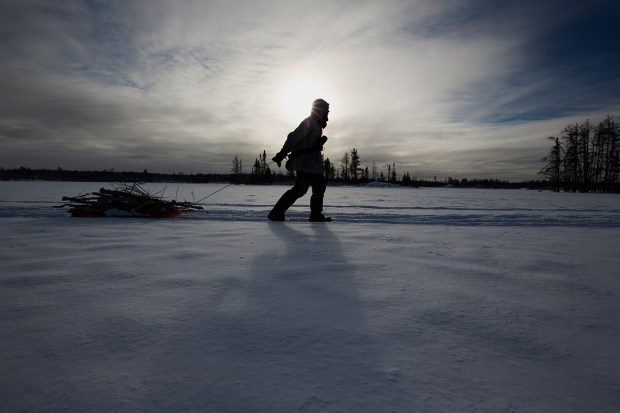
It’s cold outside.
So what? There’s pictures to be had out there. And fun. And adventure.
And, it’s cold outside.
Okay, there are some things to improve the pictures, fun and adventure side of the equation.
No, there is no math. Well … maybe a little.
DRESS IN LAYERS AND KEEP WELL-HYDRATED
First rule of photographing in cold weather is to protect your equipment, and the most important piece of gear is YOU!
Dress in layers. Cold-weather photography, particularly in snow, often involves being very active (snowshoeing hard to just the right spot) and then being very still (waiting for your buddy to finally come down that ski hill). This is a recipe for hypothermia.
Layers let you adjust your comfort level by removing outer garments as you get warm moving around and then putting layers back on as you cool down waiting for that perfect shot. Check out go.scoutlife.org/cold for some layering tips.
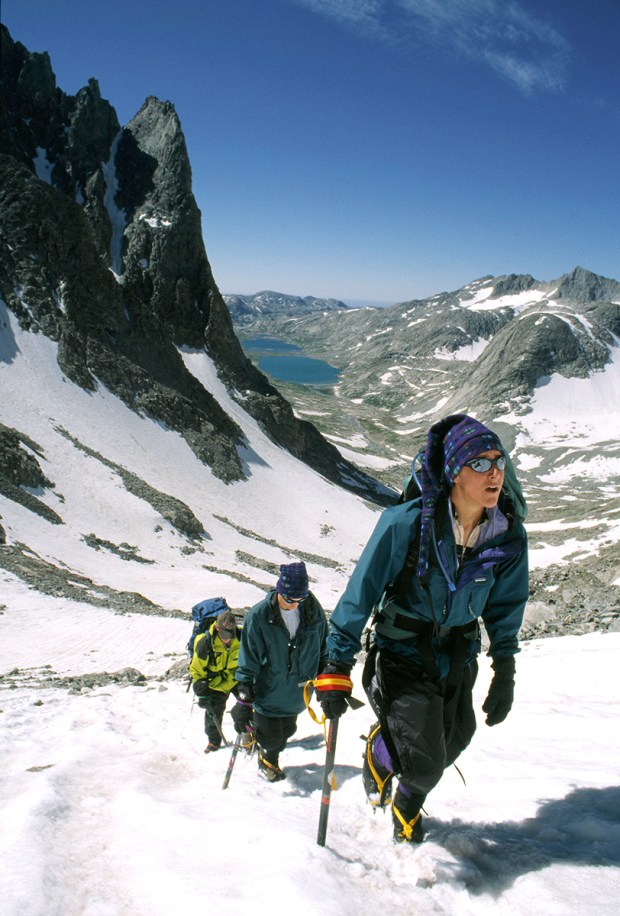
I’ve photographed in some really severe weather and so layering applies to my hands too. Gloves are a given, but sometimes I need a little more dexterity. I often wear a thin pair of glove liners, so I’m not totally exposed when I pull off the big mitts to adjust some camera settings.
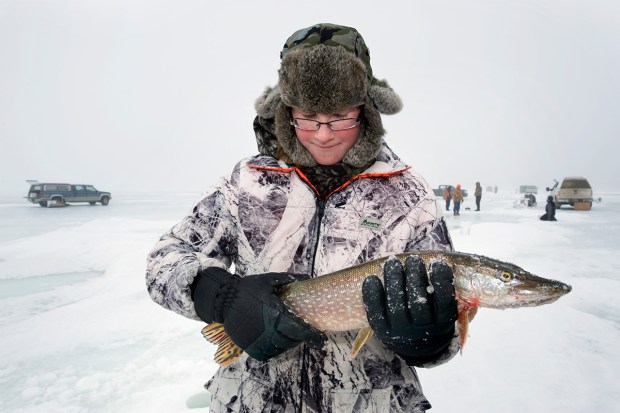
In sub-zero temperatures or severe wind-chill, any bit of exposed skin can be at risk, like your nose. Not only is it out there all by itself in the wind, your nose tends to get mashed against the cold metal back of your camera.
You know that scene in “A Christmas Story” when the kid puts his tongue on the cold flag pole? Yeah, same thing.
Once after hours of photographing on a bitter cold but sunny day at Northern Tier, I noticed some condensation had formed on the back of my camera. I didn’t think much of it as I wiped it off and continued working. It wasn’t until I returned to base when some staff members asked what happened to my nose.
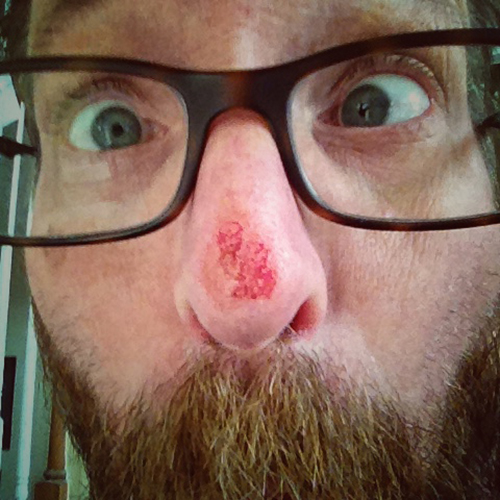
So, you might think about a scarf or some sort of cover for your face like what was worn by just about every Boy Scout I was photographing. So much for age and wisdom.
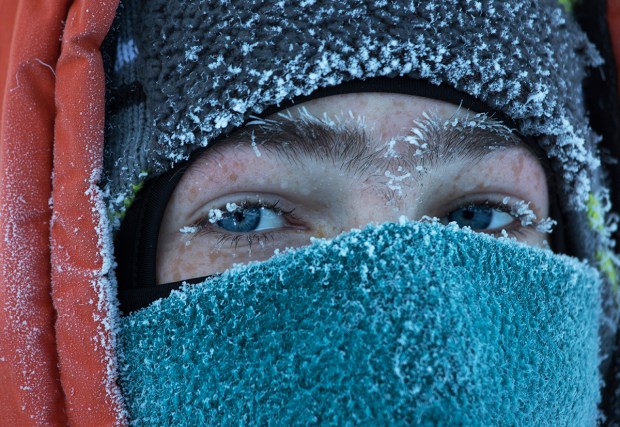
Don’t forget to keep well-hydrated and well-fed. Your body is acting like a furnace to keep you warm, so you need to stoke those fires with food. And it may not feel like it, but your body is losing a lot of water through sweat and your breath.
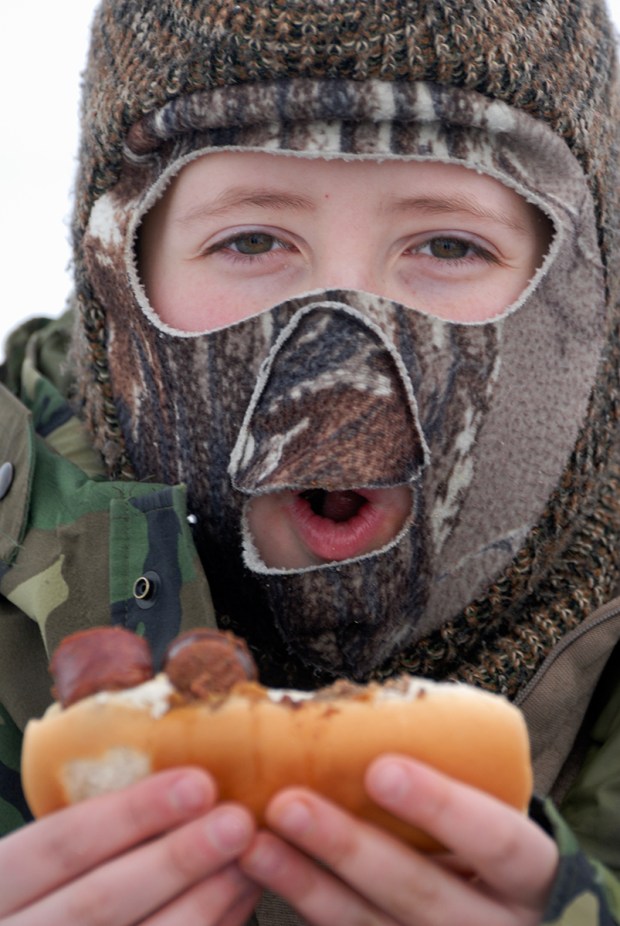
KEEP YOUR CAMERA BATTERIES WARM
Now that you’re well taken care of, let’s look after your kit.
Layering isn’t just good for you. It can be good for your batteries.
Cold temperatures drain batteries quickly even when not in use. Tuck those spare batteries in a pocket of one of your inner layers as close to your body as possible while still being fairly accessible. It will depend on how cold it is, but while photographing in minus 20-degree temperatures at Northern Tier I was going through batteries three-times faster than normal for my pro camera. All batteries are not equal. The batteries for my small “action” video cameras were dead in minutes.
If possible, tuck those “spent” batteries in another inner layer pocket. Sometimes with a little warming they might have some life left, which might be handy on a long day.
WATCH FOR CONDENSATION AND SNOW ON YOUR LENS
You might want to bring along a shammy cloth and maybe a blower brush because you will get snow on your lens. Yes, you will, and you’ll want something other than your snack-stained glove to clean it.
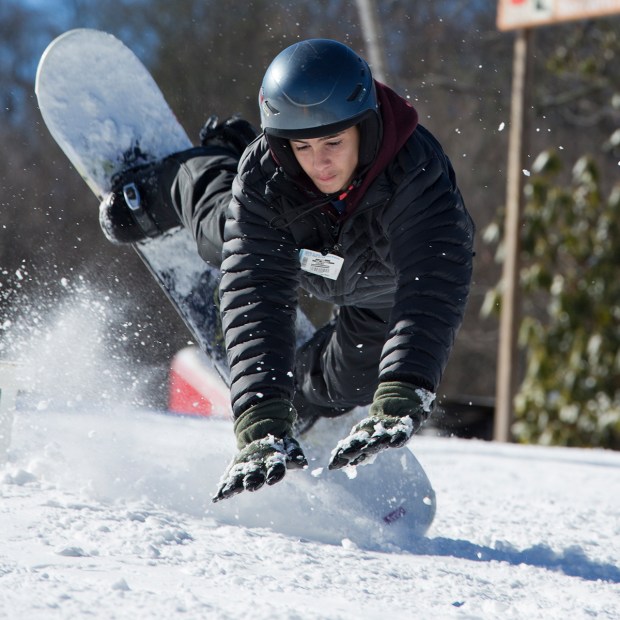
I’ve always liked having protective filters on my lenses too. In rough conditions, I’d rather an inexpensive filter take on the weather than my very expensive camera glass.
Time for a break and head inside to warm up. What’s good for your toes and fingers isn’t necessarily good for your gear. Bringing your cold metallic equipment into a warm humid environment will cause massive condensation on your camera and fog up your lenses for long while, plus as we know water and camera gear isn’t a great combo. If I’m popping inside for just a few minutes, I’ll leave my gear with someone staying outside or find a safe place in the cold. If I’m taking a longer break sometimes burying the gear in a camera bag or backpack will slow the warming process and reduce the condensation.
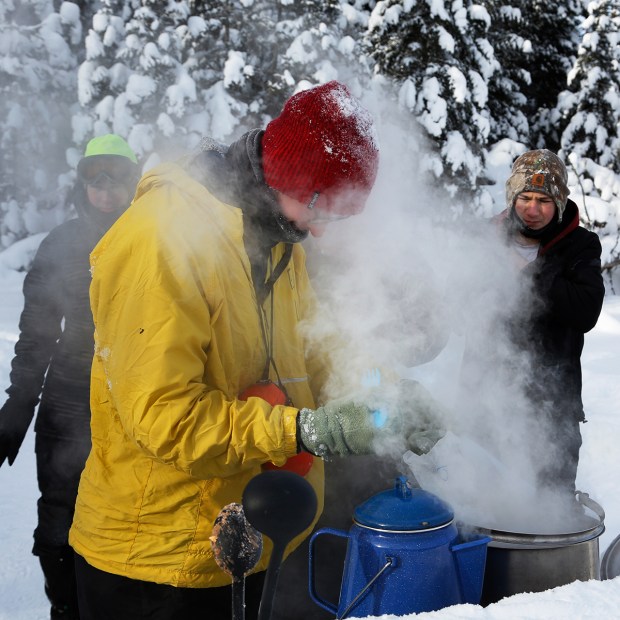
I read some people put their camera in a large sealable plastic bag, and the condensation will form on the outside and not on the camera. Just remember to remove any batteries you want to recharge or memory cards you want to download while indoors.
TOO GRAY? ADJUST EXPOSURE TO MAKE SNOW BRIGHT
Exposure isn’t just about frostbite. Ever find that your pictures of a snowy scene tend to be dark? Camera meters are very good, but still basically they see the world as 18% grey.
Yeah, here comes the math.
Snow is definitely not 18% grey, even when it’s cloudy. If you rely only on the auto exposure of the camera, you might find your pictures are often too dark. The camera is trying to make that bright white snow 18% grey. Almost all cameras, even camera phones, will have a way to compensate. Usually it is listed as an exposure setting and can be adjusted as pluses and minuses. If shooting on snow, you might want to tell the camera to give the exposure a +1 or +1.5 making it brighter. It works the other way too, so if you’re photographing dark trees, you may need to tell the camera to reduce the exposure with a -1 or -1.5. The cool thing about digital is you’ll be able to tell right away what works.

Winter is a great time to take pictures. The sun is lower in the sky longer extending those hours of “magic light” at the beginning and end of the day. Even high noon light isn’t that bad.
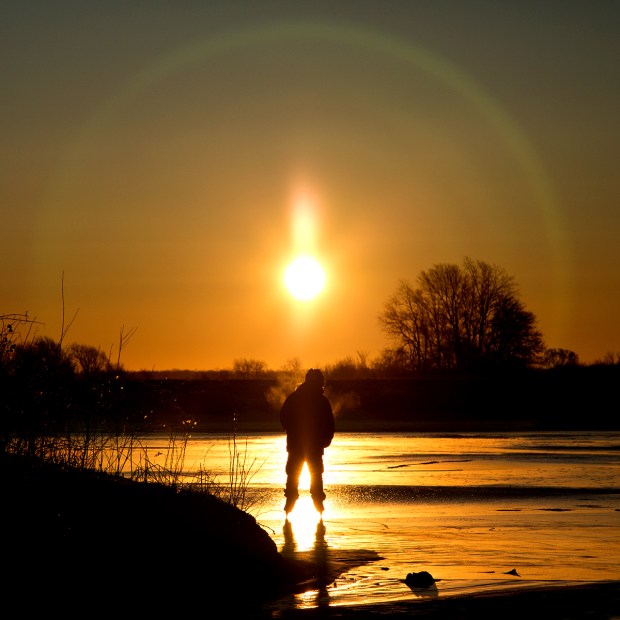
Whether it’s a light dusting or a big dump, snow can transform a ho-hum landscape into art.
So, bundle up, grab a camera and go take some pictures!
Garth Dowling, the Director of Photography for the Boy Scouts of America’s magazines, occasionally writes about photo shoots and assignments. Topics include interesting backstories; talk about tips, tricks and techniques; or even a few Q&As.







Leave a Comment